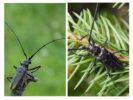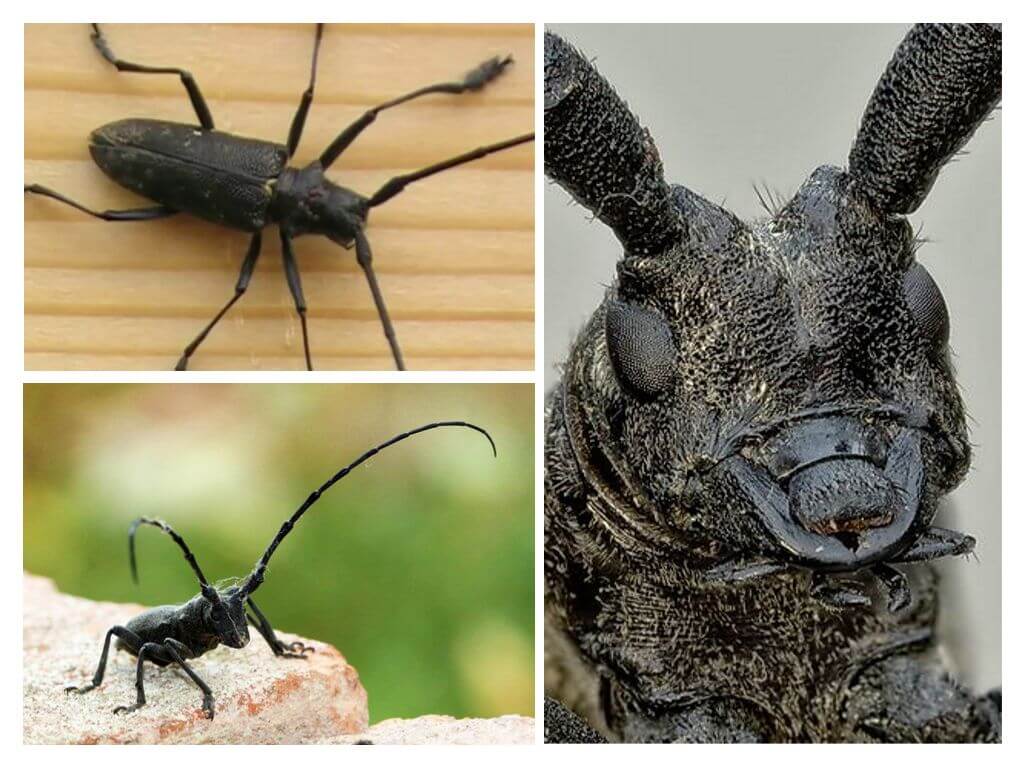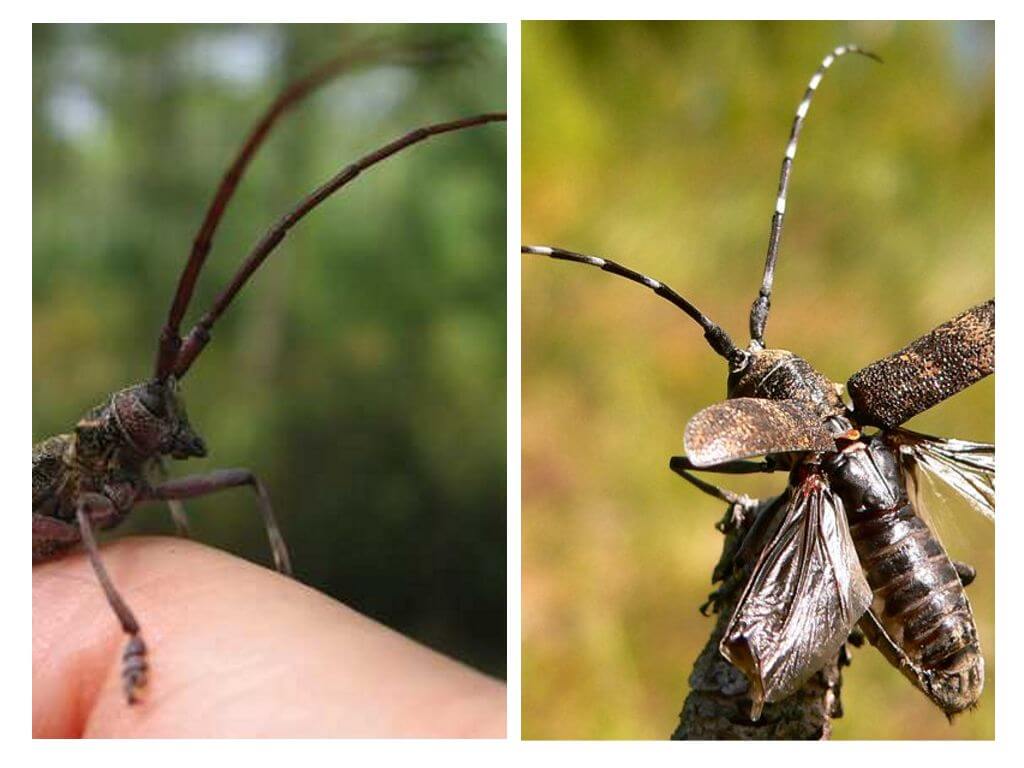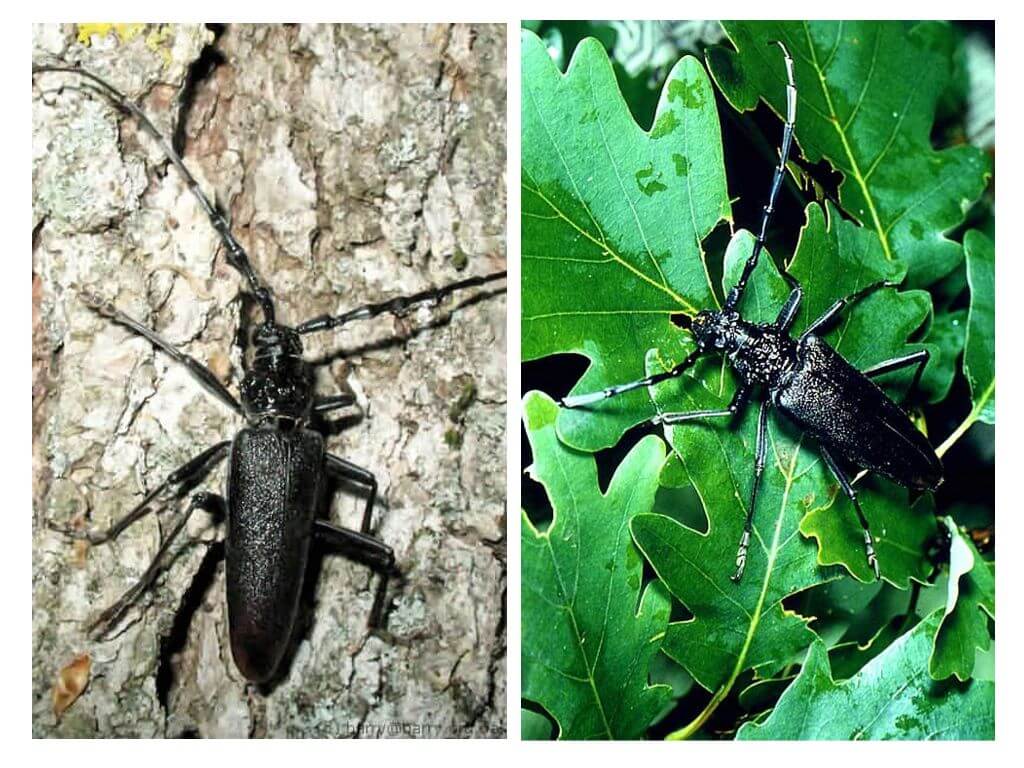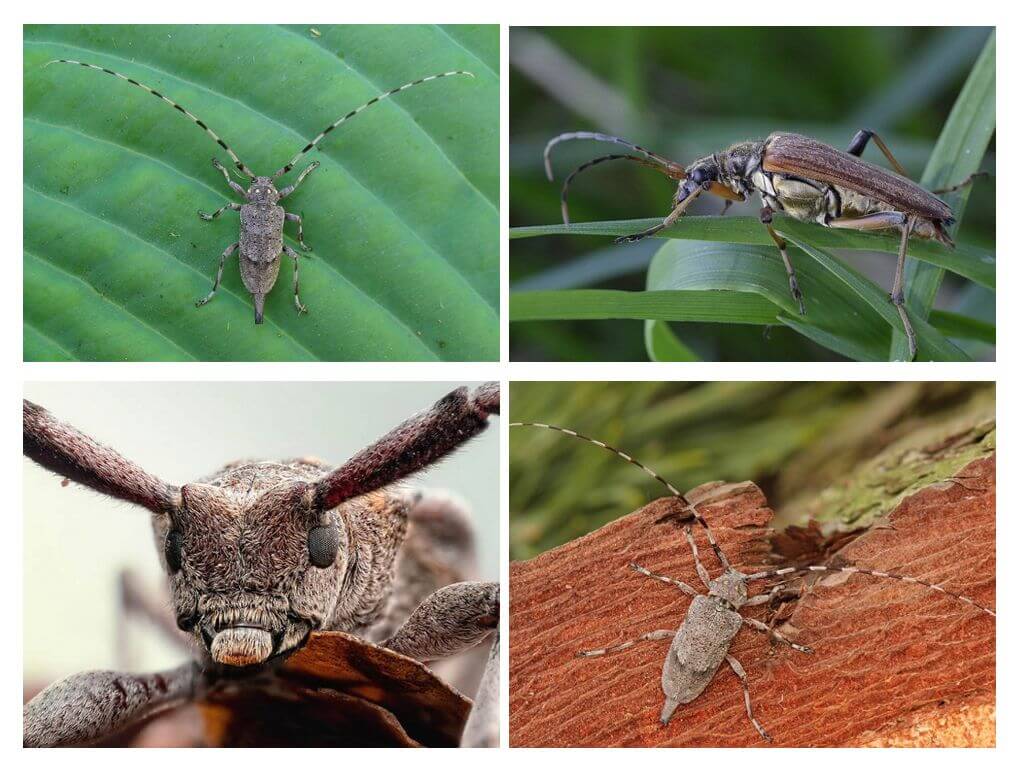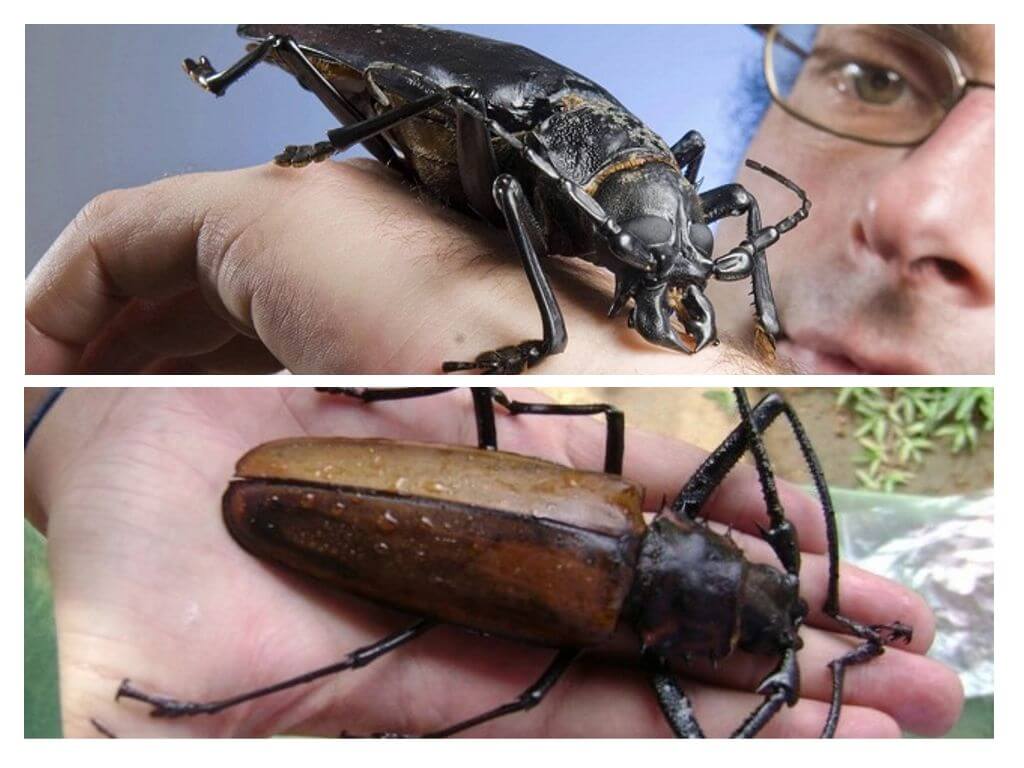- Spruce barbel
- Big and small spruce barbel
Barbel beetles belong to one of the most diverse families, a characteristic feature of the representatives of which are mustaches: their length can be several times the size of the insect itself. Often barbel bugs also called lumberjacks. They are called so because insects feed exclusively on wood, causing irreparable harm to forest lands and to humans themselves. So the most dangerous forest pests are the big black spruce barbel and the small black spruce barbel.
Where dwells
The spruce is a favorite habitat of a large black spruce barbel, quite often it can also be found on fir. In connection with what this beetle has another name - black fir barbel. Fans of needles are adapted to the most diverse living conditions, preferring the most illuminated areas of the forest.
On a note!
You can meet large and small spruce barbel in many countries of Europe, there are also in Russia.
Features of a large barbel

Spruce barbel, found in the vastness of our country, belong to the subfamily of creaks. A feature of these insects is the ability to reproduce creaky sounds that are obtained from the friction of the chest elements.
The large black spruce barbel is an insect whose body sizes vary from 1.5 cm to 3.5 cm. In many ways, the length of the beetle depends on how closely it ate in the larval stage. The coniferous barbel has a black body with a gloss, having a greenish or brown shade. It is easy to distinguish a female from a male:
- Representatives of the stronger sex in front of the elytra have a noticeable transverse indentation, covered with a large dotted line. The surface of the upper part of the elytra is covered with a thick long pile.
- In females, elytra have white or slightly yellow hairy spots. The shield is covered with yellow hairs, but they have no longitudinal bare grooves.
- You can distinguish between males and females by their mustache: in females they are much shorter and slightly exceed the size of the body, in males they are more than 2 times longer than the body.
A photo of a spruce barbel can be seen below.
Features of a small black spruce barbel
Small black coniferous barbel has a slightly smaller body, the dimensions of which do not exceed 2.4 cm. Males are owners of black long whiskers. In females, they are whitish. On each side of the shield is one shiny spike. In addition to them, females have two small yellow spots on the scutellum. On the cylindrical dark elytra, 3 transverse strips, formed from small and rare spots in the male, are marked, while in females they are more pronounced.
Beetle lifestyle and breeding
The appearance of large barbel is in May. Beetles begin to lead an active lifestyle in the second half of June, nibbling young branches in the crowns of conifers. With a large number of insects, this can significantly slow down the development of the tree. In this way, pests prepare territory for themselves. Settlement on a healthy tree, which will release tar when damaged, will end with the inevitable death of the larva. Therefore, a large black spruce barbel prefers non-sanded trunks brought to the warehouse, or fallen trees.
Fertilized females of baleen insects usually begin to lay eggs in early summer, picking the weakest trees for this purpose. With their mandibles, they gnaw a hole in the cortex, preparing in this way a nutrient substrate for the future larva. In each such notch, the female lays no more than two eggs.
The larvae hatching over time gnaw through the winding passages in the bark, trying to get closer to the wood. It takes them at least six months to complete this laborious process. With the advent of spring, fully grown larvae completely penetrate the wood layer, gnawing long passages in it. Periodically, the larva returns to the layer under the bark to clear the passages clogged with sawdust. She throws them out through the gnawed holes. In this way, these creatures protect their habitat from the appearance of fungal mold.
On a note!
By the presence of sawdust poured near the roots, it is easy to identify an infected tree.
The larval development process takes from 2 to 3 years, depending on weather conditions. Then in a specially constructed and covered with small sawdust bedroom larva pupates. The black barbel formed in the chrysalis is selected out through the hole it has gnawed.
At first, young beetles need additional nutrition: they gnaw on the bark from thin branches, which stops the process of tree development, and sometimes even leads to death. A large number of insects can do huge damage, damaging whole spruce forests. The beetle also eats linden, maple, birch and aspen wood. It forces a person using different methods. get rid of pests.
